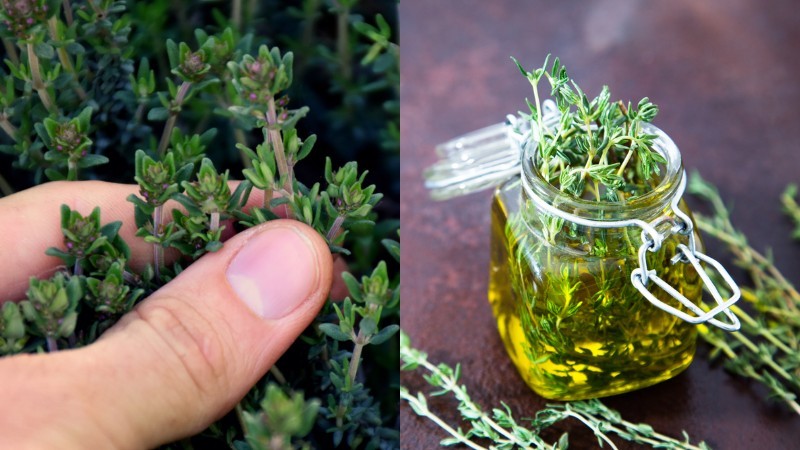
A small, evergreen shrub with light purple flowers and a pleasant flavor, thyme has been enjoyed since ancient times by the Egyptians and Greeks.
The herb soon spread throughout Europe where it helped flavor food, was given as a gift, and burned as incense.
Today, it’s used mainly for culinary purposes, although it also boasts a surprising number of medicinal benefits.
Here’s why thyme deserves a place in every garden:
1. It’s Practically Immortal
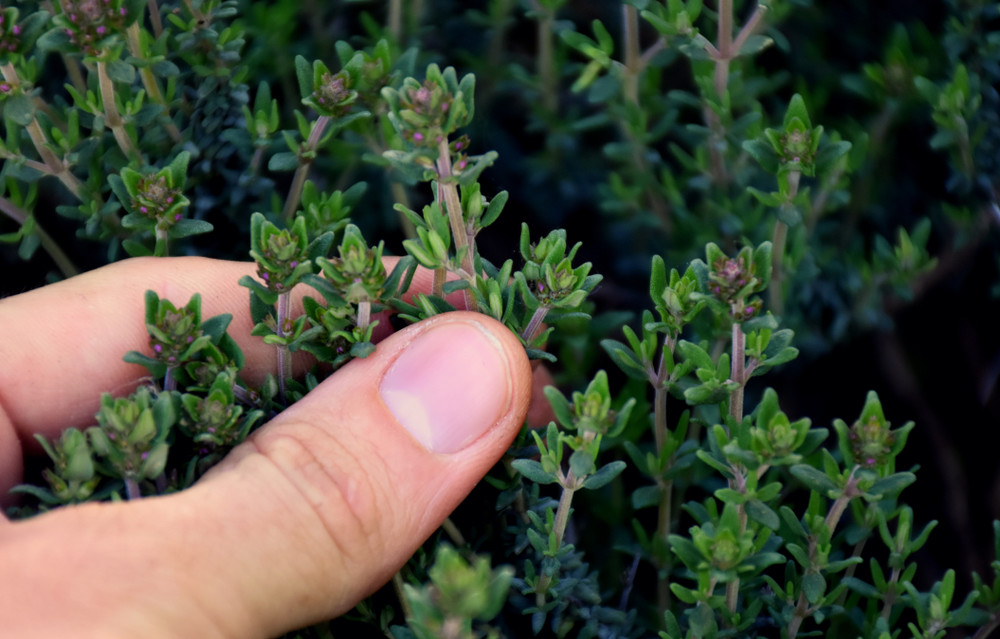
Thyme is a hardy and easy to grow herb, which doesn’t require much care once established.
It does best in loamy or sandy soil, and in full or partial sun. Starting with seedlings is best, as the seeds germinate unevenly. Those who practice companion planting should plant the thyme near cabbage.
If keeping your thyme plant indoors, give it at least six hours of direct sunlight per day, and place it only in a room with average temperature and humidity levels. Allow the top layer of the soil to dry out between waterings.
2. It Smells Beautiful
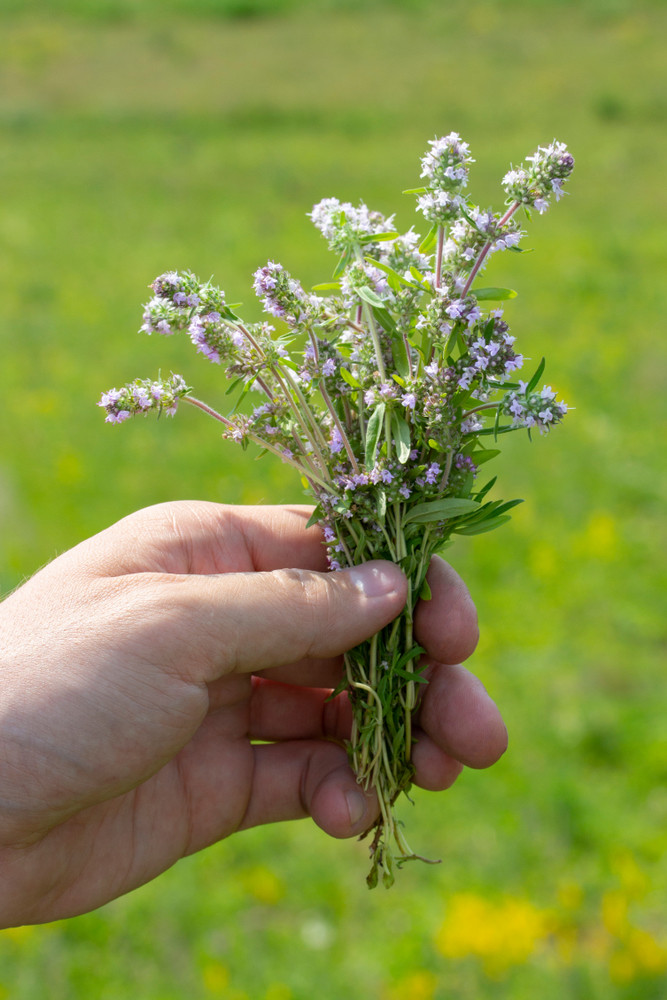
If you’re looking for an aromatic garden or home, make sure to choose thyme.
Not only is it easy to grow, but it boasts a pungent, clover-like flavor and smell. Once you get a whiff of the thyme plant, you’ll understand why the Romans used its scent to purify rooms.
Discover more of the top fragrant herbs and flowers for your garden here.
3. It Repels Garden Pests
Planting thyme in the garden is a great idea for organic gardeners. It will help to keep certain pests at bay including whiteflies, cabbage loopers, cabbage maggots, corn earworms, tomato hornworms, and small whites.
4. It Attracts Pollinators
Bring beneficial bugs to the garden, including butterflies and bees, with a few thyme plants.
Not only do these insects bring color and vibrancy to your outdoor space, but they’ll work hard to pollinate your flowers and plants.
With the global bee population in decline – something which could have devastating and far-reaching consequences – it’s vital we do all we can to protect this invaluable species.
Uses for Thyme In The Kitchen
Here are 18 ways in which you can use your thyme plant to best effect!
Although there are over fifty varieties of thyme, English thyme is used most often in cooking. Try it in:
1. Infused Vinegars and Oils
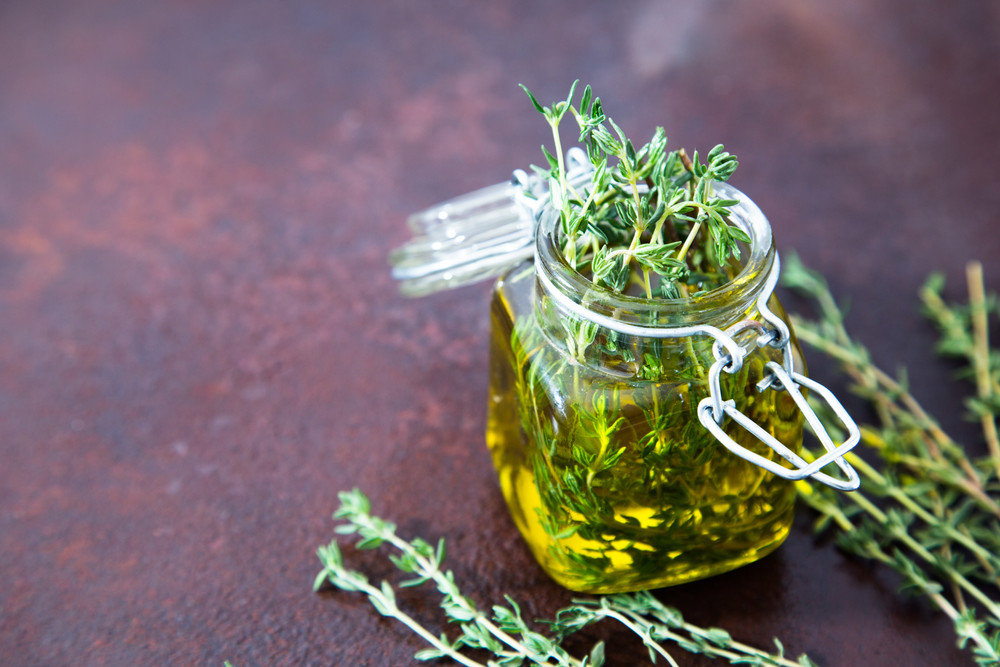
Preserve your thyme harvest by making a simple vinegar or oil infusion. It takes just minutes, doesn’t require any specialized equipment, and imparts wonderful flavor to anything it’s drizzled on.
This delicious raspberry thyme vinegar is perfect as a salad dressing or marinade. Or this rosemary thyme and lemon oil can be used for salads, marinades and more – including as a healthy drizzle over cooked vegetables or as a dip for crusty breads.
Decant into a pretty bottle and add a ribbon, and these infusions make the perfect homemade gift.
2. Herbal Butter
Elevate your butter by adding some homegrown thyme. It’s great to liven up cooked meats and vegetables, pasta, potatoes and breads. This thyme garlic butter is especially flavorsome.
3. Lemon Thyme Salt
Impart a burst of flavor to a simple grilled fish dish or plate of roast vegetables with a light sprinkling of this one-step thyme and lemon sea salt recipe.
4. Sauces and Soups
Thyme works well in all manner of sauces and soups. You can’t go wrong pairing thyme with citrus, garlic, peppercorn, cream, butter, olive oil, white wine, or even Dijon mustard.
In soups, the herb pairs well with potato, roast mixed vegetables, chicken, mushrooms, and leafy greens, to name but a few.
5. Salads and Salad Dressings
While thyme isn’t the first herb that springs to mind when we think of refreshing salad dishes, it can hold its own in a surprising variety of salads.
Try fresh or dried thyme in a simple mixed tomato salad; in this warm lemon chicken salad; or with orzo, arugula, mozzarella and sundried tomatoes.
Other impressive salad recipes which feature thyme include a summery apple and spinach salad; a refreshing pea and fennel combination; or this honey-roasted pear dish.
6. Breads and Pastas
Plain home-baked breads and pasta can be easily flavored with a drizzle of thyme infused oil or vinegar.
But don’t stop at serving these infusions atop the bread or pasta, mix thyme into the dough of these delicious staples too.
Why not try a crusty French bread with Kalamata olives and thyme or a slice of garlic thyme focaccia?
7. Desserts
As many creative cooks know, herbs aren’t just for savory dishes – they lend a fragrant earthiness to sweet treats too.
Try thyme in a blueberry soup with honey vanilla mascarpone; a tender and moist olive oil-thyme cake with figs and black pepper; gluten-free Meyer lemon pots de crème; or a simple lemon cake.
For something more indulgent, whip up these sea salt and chocolate chunk thyme cookies; or a sweet and sticky apricot galette.
8. Drinks

Use thyme in everything from refreshing detox waters to cocktail party favorites.
This lemon, lime, grapefruit and thyme detox water is both delicious and hydrating; while a raspberry thyme spritzer is perfect on a warm summer’s day. Other delicious herbed drinks include a spring thyme lemonade, and a spiced thyme and lime iced tea.
In the evenings, relax with a uniquely tasting pear thyme cocktail, or a thyme-infused honey bourbon.
9. General Cooking
Thyme’s culinary uses don’t just end here! This versatile herb works well in everything from stocks and stews to grills and roasts.
It pairs especially well with mushrooms, eggplant, tomatoes, fish, chicken, and roast potatoes. Experiment with your thyme harvest and see what amazing combinations you can create!
For Health and Wellbeing
Historically used to bring courage, aid sleep and ward off nightmares, today thyme is still thought to improve health and wellbeing in a variety of ways. Use your thyme plant to:
10. Make a Healing Oil
Harness thyme’s potent healing powers in a homemade thyme oil. Although it is a complex process (outlined here), distilling your own essential oils can be very rewarding.
To make a less potent thyme oil – a much simpler process – infuse the dried herb in a carrier oil like jojoba or olive for three to six weeks, leaving in a sunny spot. This can be used to boost memory, treat skin and hair conditions, improve oral health, and to give an invigorating massage.
11. Kill Pain
According to scientists at the Babol University of Medical Sciences in Iran, thyme is an excellent pain-relieving herb, which actually works better than ibuprofen, particularly when it comes to relieving menstrual pain.
Rub thyme oil on your skin around the affected area and you should soon experience pain relief.
12. Boost Cognitive and Mental Health
Add thyme oil to your diffuser or oil burner to stimulate the mind, aid memory and concentration, and reduce stress and anxiety.
You can also inhale the scent of fresh thyme leaves for similar effect.
13. Brew A Soothing Tea
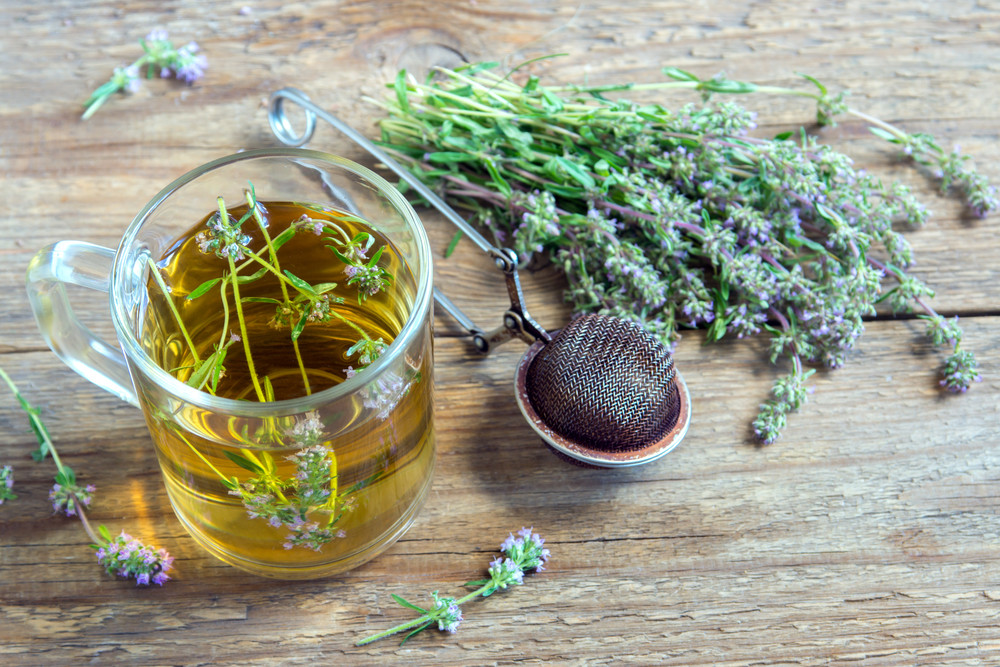
Rich in antioxidants and several nutrients, thyme tea offers more than just a pleasant flavor.
This tea can act as an expectorant, clearing the lungs of congestion. It is also said to settle the stomach, soothe a sore throat and relieve aches and pains.
Discover even more healing herbal teas here.
14. Enjoy Healthy Hair
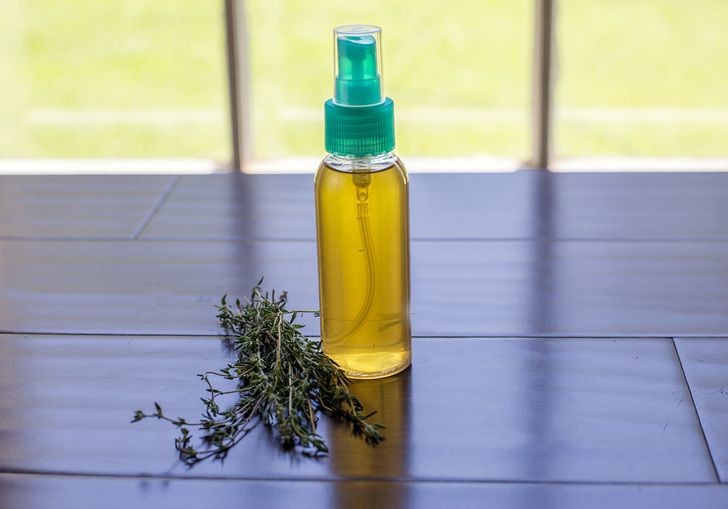
Massage thyme oil into your scalp to kill the bacteria and fungi that contribute to unhealthy scalp conditions like dandruff.
It also removes impurities, unblocks hair follicles and stimulates the scalp, all of which help to encourage hair growth.
Make this thyme hair spray to stimulate hair growth.
15. Get Glowing Skin
As it’s rich in antioxidants and boasts antiseptic properties, thyme oil is fantastic for skin health. Use it to fight acne, eczema, inflammation, and signs of ageing; or to treat minor cuts, wounds, skin itching, and even razor burn.
16. Ease Congestion and Fight Mucus
Perhaps one of thyme’s best known uses over the years is as an expectorant – helping to relieve congestion and reduce mucus build-up. It also acts as an antitussive, calming coughing spasms.
Combine thyme’s congestion-fighting properties with those of steam therapy, an effective and safe way to enhance health, and one which has been used for millennia. Make a steam bowl by filling a heat-proof pan with some just-boiled water. Stir in two spoons of fresh or dried thyme, or some thyme oil.
Drape a towel over your head and lean over the pan. Breathe in the vapors for up to ten minutes.
17. Improve Oral Health
Thyme oil is fantastic natural alternative to conventional oral hygiene products.
It can be used to treat tooth decay, gingivitis, plaque, and bad breath thanks to its antiseptic and antibacterial properties.
In fact, an active component in thyme oil, called thymol, is used as an antiseptic in many mouthwashes.
18. Repel Bugs
Thyme oil on the skin keeps away pests such as mosquitoes, fleas, lice, bed bugs, chiggers, ticks, and roaches.
To repel these insects – along with beetles and moths – from your home, use thyme oil in your diffuser, or add a few drops to a cotton ball and leave it in your closets and drawers.
